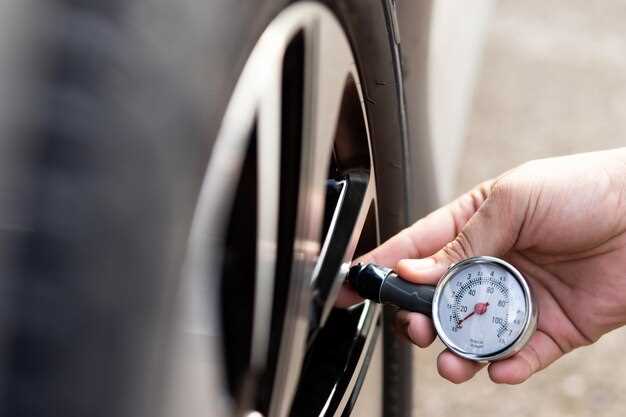
When it comes to driving, the condition of your tires plays a crucial role in ensuring overall safety on the road. Tires are the only points of contact between your vehicle and the pavement, making their maintenance essential for optimal performance. Neglecting tire safety can lead to dangerous situations, reducing your vehicle’s handling and increasing the risk of accidents.
Regular inspection and maintenance of your Toyota tires are vital to prolonging their lifespan and enhancing your safety. Factors such as tire pressure, tread depth, and alignment directly impact your tires’ functionality. Therefore, it is important to monitor these elements diligently. An under-inflated tire can lead to uneven wear, decreased fuel efficiency, and a higher likelihood of blowouts, while a properly maintained tire ensures a smoother and safer driving experience.
In this article, we will explore essential tips and best practices to keep your Toyota tires in excellent condition. From understanding the significance of regular maintenance to learning how to identify signs of wear, you will discover valuable insights that can help enhance your safety on the road. Equip yourself with the knowledge to make informed decisions about your tires and ensure that your driving experience is both safe and enjoyable.
Regular Tire Pressure Checks: Ensuring Optimal Performance

Maintaining proper tire pressure is crucial for the safety and performance of your Toyota vehicle. Regular checks can prevent uneven wear, improve fuel efficiency, and enhance driving stability. Under-inflated tires can lead to overheating and blowouts, while over-inflated tires reduce traction and can result in a harsher ride.
To ensure optimal performance, check your tire pressure at least once a month and before long trips. Use a reliable gauge to measure the PSI (pounds per square inch) when the tires are cold, as pressure can increase with heat generated from driving. Refer to your Toyota owner’s manual or the sticker located on the driver’s side door for the recommended tire pressure specific to your model.
In addition to regular checks, it’s essential to monitor tire condition for any signs of damage or wear. Maintaining the correct pressure not only extends the life of your tires but also promotes better fuel efficiency and a safer driving experience. Prioritize tire maintenance as part of your routine vehicle care to enjoy a smooth and safe ride.
Understanding Tread Wear: Signs Your Tires Need Attention
Maintaining the safety and performance of your Toyota starts with understanding the importance of tire tread. The tread is the part of the tire that makes contact with the road, and its condition directly affects your driving experience. Recognizing the signs of tread wear can help you determine when your tires need attention.
1. Uneven Wear: One of the first signs of tire trouble is uneven tread wear. This occurs when different areas of the tire wear down at different rates. Causes can include improper alignment, unbalanced tires, or issues with your Toyota’s suspension system. Regularly inspect your tires for any discrepancies in wear and have them addressed promptly to maintain optimal performance.
2. Tread Depth: The depth of your tire’s tread is crucial for adequate grip, especially in wet conditions. Use a tread depth gauge or the penny test: insert a penny into the tread with Lincoln’s head upside down. If you can see the top of his head, it’s time to replace your tires. Maintaining sufficient tread depth is essential for safe driving.
3. Cracks and Bulges: Inspecting your tires for cracks or bulges is important. Any visible damage can compromise the structural integrity of the tire and may lead to blowouts while driving. If you notice any deformities, it’s best to consult a professional for an assessment and possible replacement.
4. Vibration and Noise: Unusual vibrations while driving can indicate an issue with your tires. This could be due to uneven tread wear or an internal problem within the tire. Additionally, increased road noise can be a signal that tread is wearing down, affecting your Toyota’s comfort and stability.
5. Warning Lights: Some modern Toyota models are equipped with tire pressure monitoring systems (TPMS) that alert you when tire conditions are suboptimal. Pay attention to these warning lights and investigate the cause promptly. Ignoring them can lead to more severe issues.
In summary, being vigilant about the condition of your tires is vital for safe and effective driving. By understanding the signs of tread wear, you can ensure that your Toyota remains in excellent condition and that you travel safely on the road.
Seasonal Tire Maintenance: Adapting to Weather Changes

Maintaining your Toyota tires is crucial for optimal driving performance and safety throughout the year. Seasonal changes can significantly impact tire condition and performance, requiring specific attention to ensure they remain in excellent shape.
In winter, it’s essential to check tire pressure regularly, as colder temperatures can cause the air inside tires to contract, leading to lower pressure levels. Under-inflated tires can decrease traction on slick surfaces, compromising safety. Switching to winter tires designed for enhanced grip on snow and ice is advisable. Regularly inspect tread depth, as tires with insufficient tread can lead to hydroplaning and decreased control.
As spring arrives, it’s time to reassess tire condition after winter conditions. Thoroughly examine tires for any damage, such as cuts or punctures, that may have occurred during the colder months. Rotating tires and aligning them can help promote even wear and extend their lifespan. Additionally, check for any signs of wear on the tread pattern, as uneven wear might indicate alignment issues.
During the summer, heat can affect tire performance. Inspect tires for proper inflation, as high temperatures can increase pressure. Excessively worn tires become more susceptible to blowouts in hot weather, so ensure sufficient tread depth. It’s also a good time to clean your tires and rims, removing any dirt or road grime that may have accumulated.
When fall approaches, prepare for changing weather conditions. It’s important to re-evaluate your tire tread depth, as wet leaves can be slippery and reduce traction. Consider switching back to all-season or winter tires, depending on your region’s expected weather. Maintain appropriate inflation levels and conduct a visual inspection for any cracks or bulges that may indicate wear.
By adapting your tire maintenance routine to seasonal weather changes, you can enhance safety, improve driving performance, and prolong the life of your Toyota tires. Regular checks and timely adjustments are key to ensuring your driving experience remains safe and enjoyable all year round.
